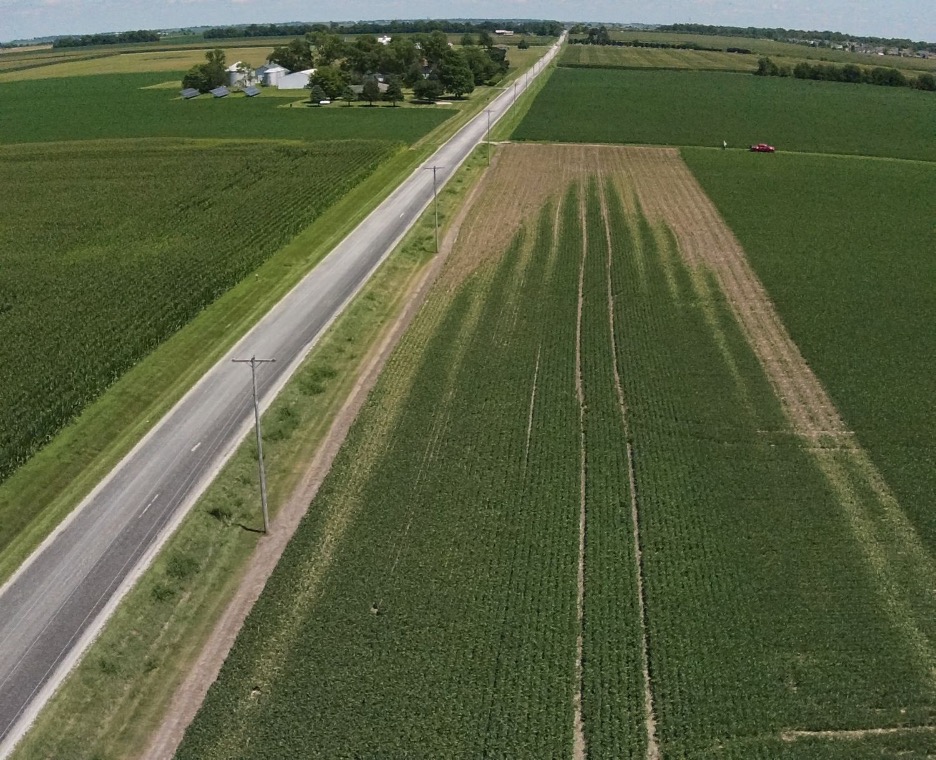We all remember years when planting conditions were difficult due to excess moisture. Who could forget 2019, when it seemed the rain would never stop and many around the state and region dealt with delayed planting decisions? While we hope another year like 2019 never comes around again, it’s good to think ahead and plan for those “what if” scenarios.
A wet spring can be even more nerve-wracking if you planted an overwintering cover crop and need to terminate it in order to plant your cash crop. What are some strategies to consider if you are confronted with this situation? The Midwest Cover Crops Council (MCCC) released a document containing guidance on cover crop termination during wet spring conditions. You can check out the original document here.
The ideal scenario for first-time cover croppers is to terminate the cover crop two weeks before planting or when it is about 6-12 inches tall. When using herbicide to terminate the cover crop, it is important to make sure the cover is actively growing so that it will uptake the chemical. Termination two weeks before planting can help prevent potential issues like nutrient tie-up. Farmers who are experienced with utilizing cover crops may choose to push back the termination date to experience greater benefits from the cover crop.
However, during a wet spring it may not always be possible to terminate the cover crop two weeks in advance. The MCCC recommended three different strategies Illinois farmers could consider as alternatives. First, attempt to spray the cover crop one to two days before planting so that the herbicide has a chance to kill the cover crop before cash crop seed is planted. One potential downside to this plan is if more rain falls between spraying the cover crop and planting, the cover crop could lodge, particularly if it is taller, causing a mat of biomass to form. The planter could struggle to cut through the mat and make closing the seed slot difficult. Make sure to check the weather for rain before spraying the cover crop.
If the first option will not work out, try spraying after planting. Make this spray pass on the same day as you plant, or within one to two days. Again, check the weather to make sure it will not rain after you plant but before you can spray. If that occurs, the cash crop may start coming up before you can spray, which may cause you to have to modify the chemical you planned to use. The cash crop would also be in direct competition with the cover crop until you can terminate it. What if you find that you’ve planted, and it has been more than two days and you are still unable to get in the field to spray? The third recommendation is to spray as soon as you can.
If you are planning to plant corn, it is very important with each of the three strategies to apply starter nitrogen fertilizer or sidedress nitrogen early in the growing season to help the crop get off to a good start. Thinking through your options now can help reduce stress during the decision-making process if you are faced with terminating a cover crop during a wet spring. Check out the MCCC website for other many other great cover crop resources.

What we want to avoid! Cover crops and spring termination can be a challenge. Read more on what considerations to take with wet spring conditions from Agronomy Manger Jennifer Jones. Picture by Abigail Peterson.

With unpredictable spring conditions not conducive to chemical spraying, and trying to maximize cover crop benefits in the spring, spraying the day of planting or soon after might be the best option. Photo: Shelby Co. Farmer


Cover crop no-till vs. Conventional
Remember your goals! By introducing cover crops and increasing residue, soil structure improves. No-till cover crop systems build a better foundation for our soybeans to grow by keeping the soil in place and increasing water infiltration.
Learn some spring management tips to take to the field from Agronomy Manager Jennifer Jones. Pictures by Abigail Peterson.




 and then
and then